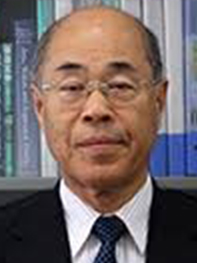
Keynote Lecture
Toshihiko Shakouchi
Professor, Emeritus
Graduate School of Engineering
Mie University, Japan
B.S. Eng., 1969 and M.S. Eng., 1971, Ehime University, and Dr. Eng., 1984, Nagoya University, Japan
Guest researcher, 1992-1993, Erlangen-Nuremberg University, Germany.
Chairperson of The 1st Int.Conf,on Jets, Wakes and Separated Flows, ICJWSF-2005, 2005, Toba-shi, Japan.
President of Japan Soc. for Multiphase Flow, JSMF, 2009.
Fellow of Japan Soc. of Mechanical Engineers, JSME.
Emeritus member of JSMF.
Interests
- Jets, wakes and separated flows
- Coanda reattached jet, Resonance jet, Oscillating jet, Edge-tone
- Supersonic Jet; Vector control, Gas atomization, Ejector
- Flow control
- Fluidics
- Gas-solid flow; Air classification of fine solid particles, Jet mill, Blaster
- Gas-liquid flow; Drag reduction, Gas absorption, Jet oscillation, FAC
- Heat transfer; Impinging jet, Oscillating jet, Heat exchanger
- Desalination of sea water by decompressed boiling
Lecture title:
Flow and Control of Some Jets and Separated Flows
One of the major purposes of fluid mechanics and engineering is to reduce the flow resistance caused by flow friction, flow separation, vortex generation, and others. To reduce the flow resistance, in general, flow control is carried out by a passive or an active method in order to reduce or increase the flow resistance depending on the needs. Passive flow control is performed by changing the configuration of flow channel or object a little and reducing the total flow resistance. On the other hand, active flow control uses a device requiring power, but it can perform various complex flow controls. In this lecture, the passive flow control of jets and separated flows is examined with flow characteristics, control methods, and some applications because jets and separated flows include the essence of fluid dynamics, such as, boundary layer flow, turbulent flow, shear flow, vortex flow and flow mixing. In particular, the effects of the nozzle shape, the tab, rib and vortex generator, and the orifice or notched orifice on the flow characteristics of sub- and supersonic jets are examined. Furthermore, the control and suppression of high speed jet noise by a chevron nozzle, some examples of active flow control, and other areas are examined. Globular formation of fine solid particles by flow control, lift control of airplane wings, and the flow control of a NOTAR helicopter without tail rotor are also addressed.